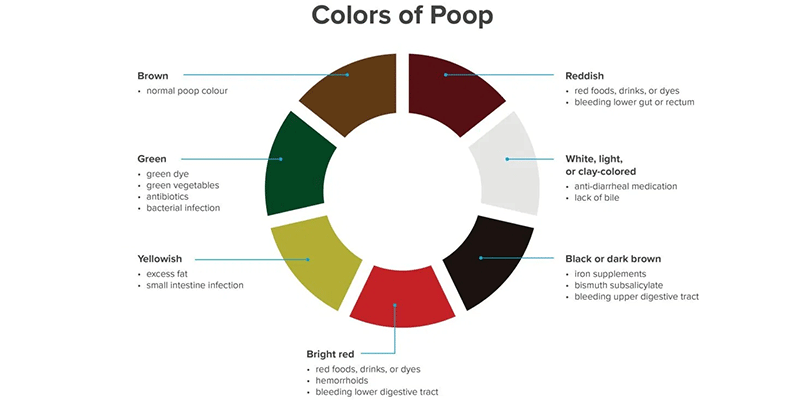
Long after adjusting to parenthood and your role as principal poop watcher and wiper, you may still find yourself fretting over changes in the color of your baby’s poop. In reality, once your baby has pooped enough to get rid of the tarry meconium, all the varying shades of yellow, brown, and even green are considered perfectly acceptable. Mustardy yellow is the color of choice for most breastfed babies, and yellow-tan with hints of green for those who are formula-fed. Being presented with a changing palette of colors is not uncommon, however, particularly later on down the road when your baby is introduced to such things as solid foods and snotty nose colds, both of which can add new shades and substance to the mix.
Black, White, and Shades of Red
There are a few colors of baby poop that, should you see them, always warrant discussion with your baby’s doctor.
- Red.Seeing red can mean blood, especially in the newborn period when your baby isn’t eating or drinking anything red-colored that could be mistaken for blood when it comes out the other end. Blood should not signal you to panic immediately, but you should bring it to the attention of your pediatrician, who will be able to help you sort out the cause. It is possible for babies to swallow some blood during delivery that presents itself shortly thereafter—either in the baby’s spit-up or poop—but, nevertheless, any amount of bloody poop should be evaluated because it can also be a sign of a problem.
- Black.Black-colored poop sometimes represents old blood because blood is known to turn from red to black over time in the intestinal tract. Remember that this black color alert does not apply to your baby’s first few meconium bowel movements, which you can fully expect to be black and tarry looking.
- White. White poop is quite rare, but needs to be brought to the attention of a doctor ASAP because it can be caused by an underlying liver problem. The earlier it is addressed, the better—either for peace of mind or medical management.
Author Laura A. Jana, MD, FAAP and Jennifer Shu, MD, FAAP
Last Updated 11/2/2009
Source Heading Home With Your Newborn, 2nd Edition (Copyright © 2010 American Academy of Pediatrics)
The information contained on this Web site should not be used as a substitute for the medical care and advice of your pediatrician. There may be variations in treatment that your pediatrician may recommend based on individual facts and circumstances.






